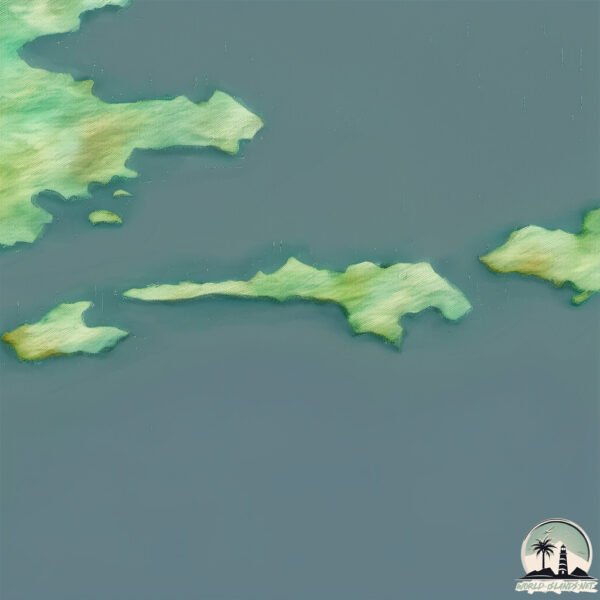Welcome to Avatanak , a Temperate island in the Bering Sea, part of the majestic Pacific Ocean. This guide offers a comprehensive overview of what makes Avatanak unique – from its geography and climate to its population, infrastructure, and beyond. Dive into the details:
Geography and size of Avatanak
Size: 34.4 km²Coastline: 71 kmOcean: Pacific OceanSea: Bering SeaContinent: North America
Avatanak is a Medium Island spanning 34 km² with a coastline of 71 km.
Archipel: Aleutian Islands – A chain of islands stretching from Alaska to Russia, known for their rugged beauty, abundant wildlife, and volcanic activity.
Tectonic Plate: North America – Covers North America and parts of the Atlantic and Arctic Oceans, characterized by diverse geological features and varying levels of seismic activity.
The geographic heart of the island is pinpointed at these coordinates:
Climate and weather of Avatanak
Climate Zone: TemperateClimate Details: Subpolar Oceanic ClimateTemperature: Cold Summer
Climate Characteristics: Predominantly cold with cool summers and no dry season. Often found in coastal areas at higher latitudes or on islands.
Topography and nature of Avatanak
Timezone: UTC-09:00Timezone places: America/AnchorageMax. Elevation: 435 m Mean Elevation: 158 mVegetation: WetlandTree Coverage: 37%
The mean elevation is 158 m. The highest elevation on the island reaches approximately 435 meters above sea level. The island is characterized by Hills: Gently sloping landforms with rounded tops, having a maximum elevation between 200 and 500 meters. Hills contribute to a varied landscape on islands.
Dominating Vegetation: Wetland
Vegetation: 10 vegetation zones – Very Highly Diverse Island
Infrastructure and Travelling to Avatanak
Does the island have a public airport? no .
Does the island have a major port? no .
The mean population of Avatanak is 0 per km². Avatanak is Uninhabited. The island belongs to United States of America .
Continuing your journey, Rootok is the next notable island, situated merely km away.
What is Tigalda Island? Explain Tigalda Island, Define Tigalda Island, Meaning of Tigalda Island
Tigalda Island ~~~ Title: What is Tigalda Island? Explain Tigalda Island, Define Tigalda Island, Meaning of Tigalda Island Created ...
What is Tigalda Island? Explain Tigalda Island, Define Tigalda Island, Meaning of Tigalda Island
Tigalda Island ~~~ Title: What is Tigalda Island? Explain Tigalda ...
Tigalda Island ~~~ Title: What is Tigalda Island? Explain Tigalda Island, Define Tigalda Island, Meaning of Tigalda Island Created ...
Poveglia Island: The Haunting Truth Behind Italy's Most Terrifying Location
Explore the dark and chilling history of Poveglia Island, where the ...
Explore the dark and chilling history of Poveglia Island, where the echoes of the past still haunt the present. Once a quarantine ...
Akun Sunrise 01.mpg
Sunrise over Lake 1 on Akun Island, Alaska.
Sunrise over Lake 1 on Akun Island, Alaska.
United States of America is classified as Developed region: G7: Group of Seven – Major advanced economies, including Canada, France, Germany, Italy, Japan, the United Kingdom, and the United States. The level of income is High income: OECD.
News – Latest Updates and Headlines from Avatanak
Stay informed with the most recent news and important headlines from Avatanak. Here’s a roundup of the latest developments.
Loading...
Please note: The data used here has been primarily extracted from satellite readings. Deviations from exact values may occur, particularly regarding the height of elevations and population density. Land area and coastline measurements refer to average values at mean high tide.

